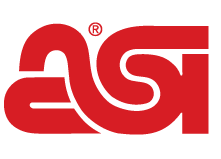It’s never been easier to shop for promotional products. The convenience and transparency have been a boon for end-buyers who can see exactly where their order is in the supply chain, and the myriad ways to communicate and share information means they can be involved in every step along the way.
But one and two rungs up the supply chain ladder, these realities are causing headaches for distributors and suppliers. Half of distributors told ASI Research they agreed with the statement that “Projects are taking longer than they have in the past,” and the percentage who “strongly agree” is higher among the largest distributors.
There are many reasons behind this shift. One explanation involves the evolution of the industry’s design capabilities and the buying habits of the customers. Gone are the days of “Add Logo Here.” Things need to be more intentional, as the kids say.
“We’ve seen an uptick in more creative work,” says Bill Feldberg, executive vice president of business development for Counselor Top 40 distributor Something Inked (asi/329822). “It’s no longer just ‘slap’ a logo on something, but rather incorporate it into more creative art, or spice it up so it’s not just a basic logo, especially when it comes to apparel.”
We asked distributors:
“Are client projects taking longer to complete than they have in the past?”
Feldberg says that the slowdowns often come from additional approvals. It’s especially true for Something Inked’s professional sports clients, where licensing and approval from teams and artists can get complicated.
“There’s a long list of approvals to ensure all the art is correct and lines up with the brand-specific marks,” he says. “Now press approvals are required for almost all jobs. The first printed piece is photographed or physically sent. Then, often changes are needed from there, which can severely delay things as the job is set up and ready to run.”
Other distributors, like Counselor Top 40 firm Geiger (asi/202900), have experienced slowdowns as a result of the increased transparency in the ordering process. Even some of the processes designed to create long-term efficiency can gum up the works.
“Clients want control over their brand and brand message across borders,” says Geiger CEO Jo-an Lantz, a member of Counselor’s Power 50. “They want data, which requires sophisticated technical systems. They want efficiency, which requires integration. Finally, that very integration requires sophisticated controls for cybersecurity.”
More Services, More Stress
More than half of distributors reported that their work-related stress increased in 2024 over 2023. The jump was most notable for distributors in the $1M to $5M range, with 77% of distributors noticing an uptick in stress. Also noteworthy: when asked if their stress level increased in 2025 compared to 2024, the total for distributors jumped 10 percentage points compared to the previous year’s results. More services, stricter requirements and expansive client asks have contributed to increased workload and stress. “The breadth of our offerings and creativity, coupled with client integrations and cyber risks, have added an extraordinary layer of complexity,” says Jo-an Lantz, CEO of Top 40 distributor Geiger (asi/202900).
We asked distributors:
“Did your work stress level in 2024 increase compared to 2023?”
We asked distributors:
“Has your work stress level in 2025 increased compared to 2024?”
Note: Sample size not large enough for 2025 distributor demographic breakdowns
And the days of a simple handshake deal or verbal agreement are long gone, especially among the largest clients. Lengthy RFPs (requests for proposal) and detailed contracts with names like Statement of Work or Master Service Agreement are increasingly commonplace.
Bigger Sales, Longer Leashes
The time in which distributors got paid stayed the same or declined across all revenue classes – including the largest (over $5 million in revenue), which saw their days sales outstanding drop by four days. Still, large and extra-large distributors on average take an extra week to get paid compared to small and medium-sized distributors. Bill Feldberg of Counselor Top 40 distributor Something Inked (asi/329822) attributes the longer time period to the clientele the distributor serves, including sports and entertainment. “We traditionally have always had a longer pay cycle based on the niche markets we work with,” he says. “We shoot for 30 days. Most of our major clients pay 45 to 60 days, a couple at 90 days and one or two at 180 days for special, agreed-on circumstances.”
Days to Get Paid
Lantz noticed after COVID the contracts that were once 15 to 20 pages could now be as long as 50 to 70. “We saw a trend for contracts on large one-off orders rather than all purchases over a defined period of time,” she says. “My sense is these contracts were originally developed for large purchases for other product categories and are now moving into the promo and merch space.”
Aaron Hamer, CEO of Counselor Top 40 distributor Boundless (asi/143717) and a Counselor Power 50 member, has found that contract negotiations can get stalled around details like sustainability, product safety and data security. “Think SOC 2/3, PCI compliance, GDPR/CCPA and accessibility standards,” he says. “Our internal teams support sales by fielding these requests in tandem with project execution, so the selling experience remains seamless.”

“By providing upfront documentation and keeping clients looped in early, we avoid bottlenecks down the road.”Aaron Hamer, Boundless
Distributors are responding to these complexities by assuming more work on the front end. For Lantz and Geiger, dealing with issues like larger contracts has required involving their legal team in the pre-sales process for contract negotiation and review. It’s also meant getting more “sophisticated technology,” as she puts it, for data requests.
At Boundless, the sales process has been streamlined with support staff working in tandem with sales to handle documentation and security reviews while the project is being set up. “This allows us to check the necessary boxes without slowing down momentum,” Hamer says. “By providing upfront documentation and keeping clients looped in early, we avoid bottlenecks down the road.”
Tariffs, of course, have compounded these issues. There’s the broader matter of clients simply putting their orders on hold, along with the added complexities of supply chain disruption and inventory shortages with many companies choosing to pause their imports.
“Global shipping regulations have required expanded sources of supply and procurement, logistics and local representation,” Lantz says. “It requires a staff with a greater level of sophistication on all aspects of the order and program.”
Jake Himelstein, president of Counselor Top 40 distributor BAMKO (asi/131431) and a member of the Counselor Power 50, includes tariffs as one of the three most likely factors to extend order schedules, along with stock shortages and surprise brand-use reviews.
“We hedge by holding core blanks domestically, dual sourcing every key item in at least two regions, and offering pre-cleared design options so internal reviews don’t stall the process,” Himelstein says. “We keep decision authority close to the project team, leverage real-time production data, and maintain long-term supplier partnerships that prioritize our orders. That combination lets us deliver reliably even when external conditions are unpredictable.”
Attracting (And Keeping) Talent
Key metrics across the board as they relate to labor decreased for distributors in 2024 compared to the prior year. Half of distributors, though, still had concerns about finding and retaining qualified workers. Distributors like Counselor Top 40 BAMKO (asi/131431) – a 2024 Counselor Best Place to Work – have found consistency through solid recruiting programs and a strong company culture. “Our turnover rate is extremely low,” says BAMKO President Jake Himelstein, “in large part due to our focus on building a strong remote culture.”
Distributor Labor Statistics
(% Agree)
